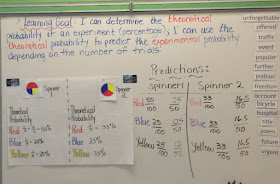| CC licensed photo shared by Flickr user Daveynin |
Recently, some older students in our school "smuggled" a personal electronic device out into the hallway and they used it inappropriately. I don't think I need to go into any details, there are hundreds of ways to "use technology inappropriately".
The result is that our principal has decided to ban personal electronic devices from school property.
I understand his frustration and the pressure he must be under. But I am not convinced this is the solution.
In my class, I have a BYOD policy. In the past nine months, I had one student bring his phone out to recess because he forgot that it was in his jacket pocket. He then left his jacket outside, with the phone still in his pocket. He begged to go back outside to get his jacket. Luckily, the jacket was still there. I also had one student take a video of another student who was dancing in a silly manner while we were getting ready for home. I was in the classroom at the time. I took his device away for a few days because we have a strict policy in the class that video taping only occurs with teacher permission.
Other than that, I have had absolutely NO issues with their electronic devices. They come in in the morning, they put their devices in a cupboard which remains locked throughout the day (it also houses our class laptops and iPads). When we need the devices, we take them out of the cupboard. It's that simple.
I have done a LOT of EXPLICIT teaching up front about appropriate use of technology and responsible digital citizenship. My students have a mantra: "What goes on the Internet, stays on the Internet." They know that they shouldn't post anything they wouldn't be proud to show to their grandmothers.
They also know how to be cautious and protect their personal identity. They know the dangers.
I don't believe banning electronic devices is the solution.
Let's face it: Kids (and adults for that matter) have been known throughout history to use communication devices inappropriately. Give a kid a can of spray paint, and he may paint a mural, or he may paint a racial slur. Give a kid a marker and she might create a title page or she might write her "frenemy's" name on the bathroom wall. I've picked up a lot of inappropriate notes that have been passed around on paper in my day! Should we ban paint, markers and paper? What about the almighty pen?
I know, the scope, and therefore the damage, is so much greater with the Internet available to them. But as soon as they step off school property they are using the technology. Are we any less responsible because it happens outside of the school day? Isn't it better to take our heads out of the sand and teach responsible digital and global citizenship BEFORE the inappropriate usage starts? Aren't we responsible as their EDUCATORS to teach them how to use digital devices for their benefit rather than to their detriment?
Today I showed my students this TED Talk by Sugata Mitra. I'm guessing everyone is familiar with it, but in case you aren't, please take the time to watch this video. More than anything else, this video helped me to understand the power of creating a child-driven learning environment using technology.
I welcome your input on this issue. It is something we have to face and make decisions about more and more often these days.
















